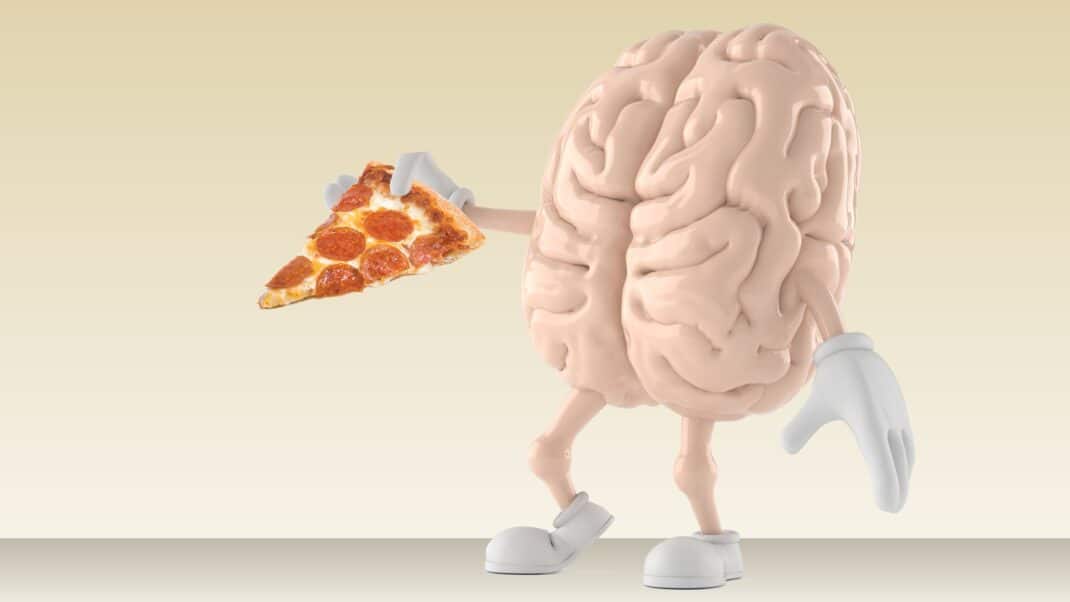Getting to the Heart of Pre-Exercise Screening
Here's how to avoid the pitfalls of assessing clients' risk of cardiovascular disease.

A preparticipation health screening helps trainers and prospective clients safely launch into an exercise program. When the American College of Sports Medicine updated its pre-exercise screening guidelines 3 years ago, it made one major shift: It stopped recommending the use of a tool to assess cardiovascular disease risk.
This may seem like an odd choice, given that exercise is so central to reducing CVD risk. Why wouldn’t trainers want to use a tool to help people understand their likelihood of developing heart disease? It turns out that ACSM’s rationale for the change underscores a critical insight regarding exercise participation and adherence.
The Roots of ACSM’s Shift
In 2015, ACSM introduced new prescreening guidelines developed by a roundtable of ACSM pros with practitioner, clinical, educational and scientific experience in physical activity and exercise (Riebe et al. 2015). These professionals introduced a new model of pre-exercise health-screening recommendations based on the exerciser’s desired intensity; how much physical activity the person currently does; and any symptoms of known metabolic, cardiovascular or kidney diseases.
The professional panel affirmed that it’s important to identify CVD risk factors to help clients prevent or manage heart disease. But the panel made a point of redefining the recommendations for telling people about their risk of developing heart disease. ACSM did this because it wanted to remove some barriers that might prevent people from using exercise to stay healthy.
Why ACSM Updated Its Health-Screening Guidelines
Riebe and colleagues (the panel) explain that CVD risk-factor profiling can have a downside: unnecessary referrals to a healthcare provider for clearance to start an exercise program. Unfortunately, these doctors’ visits may result in false-positive test results, which can trigger personal stress in clients and lead to more treatments that impose unnecessary financial and personal burdens. These disadvantages can discourage the adoption of a physically active lifestyle.
Riebe et al. note that motivating people to adopt a lifestyle of regular physical activity is a considerable challenge; therefore, pre-exercise health-screening guidelines should not unnecessarily deter people from becoming more active.
Why wouldn’t trainers want to use a tool to help people understand their likelihood of developing heart disease? It turns out that ACSM’s rationale for the change underscores a critical insight regarding exercise participation and adherence.
How Safe Is Exercise?
In their review, Riebe et al. concede that sudden vigorous physical exertion can elevate the acute risk of two potentially fatal heart problems:
- sudden cardiac death (SCD), when the heart’s electrical system malfunctions and the heart beats dangerously fast
- acute myocardial infarction (AMI), better known as a heart attack, when one or more coronary arteries have a blockage
However, the researchers note that SCD occurs once in every 1.5 million episodes of vigorous physical exertion in men and once in 36.5 million hours of moderate-to-vigorous exertion in women. All of the published data on SCD and AMI during exercise says these events are very rare, suggesting that exercise is safe for most people, the researchers say. They add that physically inactive people face a greater total risk for an abrupt cardiac event (any incident that damages heart muscle) than their physically active counterparts.
Even though increasing age is a CVD risk factor, there is no evidence that age is a strong predictor of SCD or AMI (Riebe et al. 2015). The researchers add that there’s little data on cardiovascular risk during resistance training, but that risk appears to be low. Most importantly, regular physical activity shows an inverse relationship with SCD and AMI, meaning the more people exercise consistently, the less likely they are to have a life-threatening heart complication.
Should Fitness Pros Still Assess for CVD Risk?
Riebe et al. state that CVD risk assessments should not be part of the process of providing medical clearance for exercise because these assessments cannot accurately predict the likelihood of a heart attack or other CVD issues. However, the panelists still encourage exercise pros to assess clients’ CVD risk factors (see Table 1) to help prevent or manage cardiovascular and metabolic diseases.
In another guideline change, people with pulmonary disease are no longer automatically referred for medical clearance. Pulmonary disease does not increase the risk of fatal cardiovascular events during or immediately after exercise.
New ACSM Pre-Exercise Health-Screening Algorithm
An algorithm is a set of steps that can be followed to solve a problem. The new pre-exercise health-screening algorithm (Riebe et al. 2015) shows the steps to follow for exercisers (Table 2) and nonexercisers (Table 3). Exercisers are described as persons who have engaged in planned, structured activity of moderate intensity for at least 30 minutes on at least 3 days per week for at least the past 3 months (Riebe et al. 2015). Light-intensity exercise is defined as exercise that causes a slight increase in heart rate and breathing (30% < 40% of heart rate reserve, 9–11 rating of perceived exertion). By comparison, moderate-intensity exercise causes a noticeable increase in heart rate and breathing (40% < 60% of heart rate reserve, 12–13 RPE), and vigorous exercise causes a substantial increase in heart rate and breathing (≥60% heart rate reserve, ≥14 RPE).
Find Out More
To reduce the risk of exercise-related cardiovascular health complications, fitness pros should always ensure that clients follow an individualized, safe and effective exercise design that progressively transitions frequency, intensity, time, exercise type, volume and progression (known as the FITT-VP principle of exercise program design). To learn more, see ACSM’s Guidelines for Exercise Testing and Prescription (10th ed.), which has the most up-to-date information on exercise guidelines for fitness pros who do exercise tests and design exercise programs (ACSM 2018).
Len Kravitz, PhD, CSCS, is the program coordinator of exercise science at the University of New Mexico, where he has received the Outstanding Teacher of the Year and Presidential Award of Distinction. In 2016, in addition to being inducted into the National Fitness Hall of Fame, he received the canfitpro Specialty Presenter Award.
© 2018 by IDEA Health & Fitness Inc. All rights reserved. Reproduction without permission is strictly prohibited.
References
ACSM (American College of Sports Medicine). 2018. ACSM’s Guidelines for Exercise Testing and Prescription (10th ed.) Philadelphia: Wolters Kluwer.
AHA (American Heart Association). 2018. Understand your risks to prevent a heart attack. Accessed July 26, 2018: heart.org/HEARTORG/Conditions/HeartAttack/UnderstandYourRiskstoPreventaHeartAt
tack/Understand-Your-Risks-to-Prevent-a-Heart-Attack_UCM_002040_Article.jsp#
.W0pdW4V84fo.
NHLBI (National Heart, Lung, and Blood Institute). 2017. Lower heart disease risk. Accessed July 24, 2018: nhlbi.nih.gov/health/educational/hearttruth/lower-risk/risk-factors.htm.
Riebe, D., et al. 2015. Updating ACSM’s recommendations for exercise preparticipation health screening. Medicine & Science in Sports & Exercise, 47 (11), 2473–79.
CURRENT HEART DISEASE RISK FACTORS
Modifiable Risk Factors
- lack of physical activity
- smoking
- high blood cholesterol
- overweight or obesity
- high blood pressure
- diabetes and prediabetes
- unhealthy diet
Factors That Boost Heart Disease Risk
Stress: People under stress may start smoking or overeat, contributing to heart disease risk.
Alcohol: Excessive drinking may elevate blood pressure and increase a person’s risk for cancer, stroke and other diseases. Limiting alcohol consumption to no more than two drinks per day for men and no more than one drink per day for women is recommended.
Fixed Risk Factors
Age: The majority of people who die from CVD are 65 and older.
Gender: Men have a higher risk of heart attack than women do. Men also have heart attacks earlier in life.
Family history of heart disease: If your mother or sister had a heart attack before age 65, or if your father or brother had one before age 55, you are more likely to get heart disease.
Menopause: When production of estrogen drops, women are more likely to get heart disease.
Early menopause: Women who have had a hysterectomy or have entered natural menopause early are twice as likely to develop heart disease as women of the same age who have not gone through menopause.
Pre-eclampsia: This pregnancy condition, characterized by high blood pressure, is another nonmodifiable heart disease risk factor.
CLIENT EXERCISES REGULARLY
If the client has no cardiovascular (CV), metabolic or renal disease and no symptoms of these conditions:
Medical clearance is not necessary.
Continue moderate- or vigorous-intensity exercise, progressing by ACSM guidelines.
If the client has known CV, metabolic or renal disease and shows no symptoms:
Medical clearance is not necessary for moderate-intensity exercise. Medical clearance (within the last 12 months if there has been no change in signs/symptoms) is recommended before engaging in vigorous-intensity exercise.
Continue moderate-intensity exercise. After medical clearance, client may tolerate gradual progress, following ACSM guidelines.
If the client shows any symptoms of CV, metabolic or renal disease, regardless of known disease status:
Stop exercise and seek medical clearance.
Client may resume exercise after medical clearance. Progress as tolerated, according to ACSM guidelines.
CLIENT DOES NOT EXERCISE REGULARLY
If the client has no CV, metabolic or renal disease and no symptoms of these conditions:
Medical clearance is not necessary.
Light- to moderate-intensity exercise is recommended. Client may gradually as tolerated, following ACSM guidelines. If the client has known CV, metabolic or renal disease and shows no symptoms:
Medical clearance for exercise is recommended.
After medical clearance, light- to moderate-intensity exercise is recommended. Client may gradually progress as tolerated, following ACSM guidelines.
If the client has any symptoms of CV, metabolic or renal disease, regardless of disease status:
Medical clearance for exercise is recommended.
After medical clearance, light- to moderate-intensity exercise is recommended. Client may gradually progress as tolerated, following ACSM guidelines.
FAST FACT</div
When production of estrogen drops, women are more likely to get heart disease.
In another guideline change, people with pulmonary disease are no longer automatically referred for medical clearance. Pulmonary disease does not increase the risk of fatal cardio­vascular events during or immediately after exercise.
LEGEND FOR TABLES 2 AND 3
CV: cardiac peripheral vascular, or cerebrovascular
medical clearance: a healthcare professional’s approval to engage in exercise
metabolic disease: type 1 and 2 diabetes mellitus
symptoms at rest or active: pain and/or discomfort in the neck, chest, arms, jaw, or other areas from ischemia (lack of oxygen); shortness of breath at rest or with mild exertion; dizziness or syncope (temporary loss of consciousness); unusual fatigue or shortness of breath with usual activities
Tables adapted from Riebe et al. 2015.
Len Kravitz, PhD
Len Kravitz, PhD is a professor and program coordinator of exercise science at the University of New Mexico where he recently received the Presidential Award of Distinction and the Outstanding Teacher of the Year award. In addition to being a 2016 inductee into the National Fitness Hall of Fame, Dr. Kravitz was awarded the Fitness Educator of the Year by the American Council on Exercise. Just recently, ACSM honored him with writing the 'Paper of the Year' for the ACSM Health and Fitness Journal.






